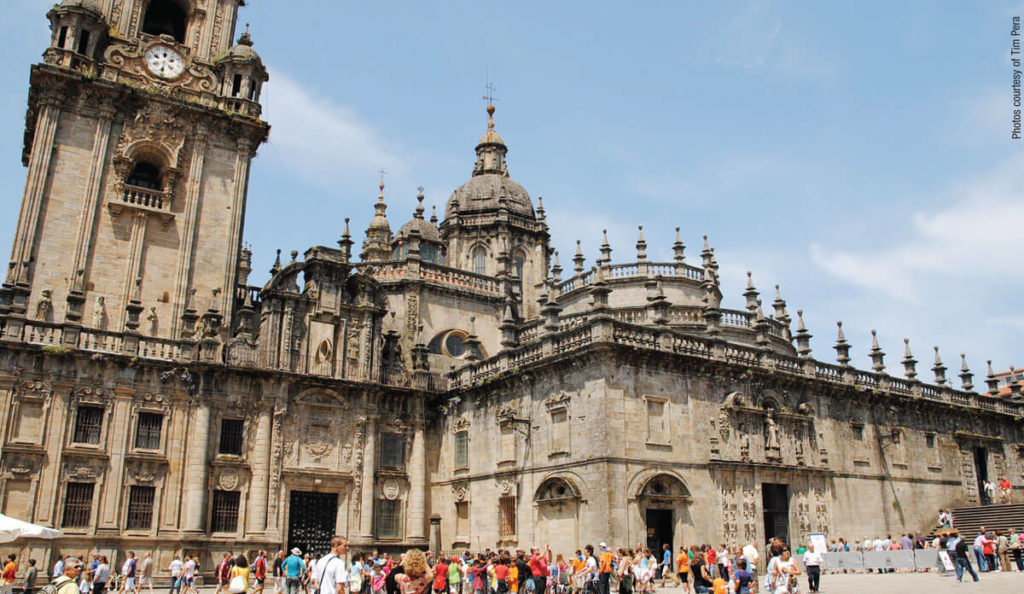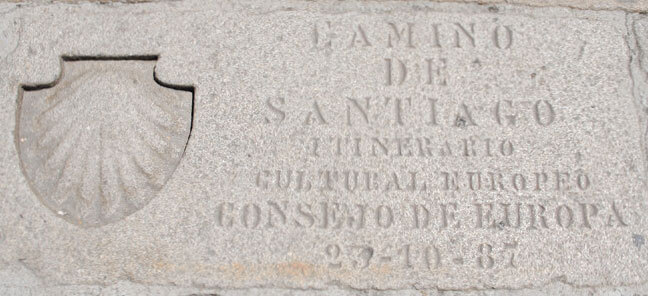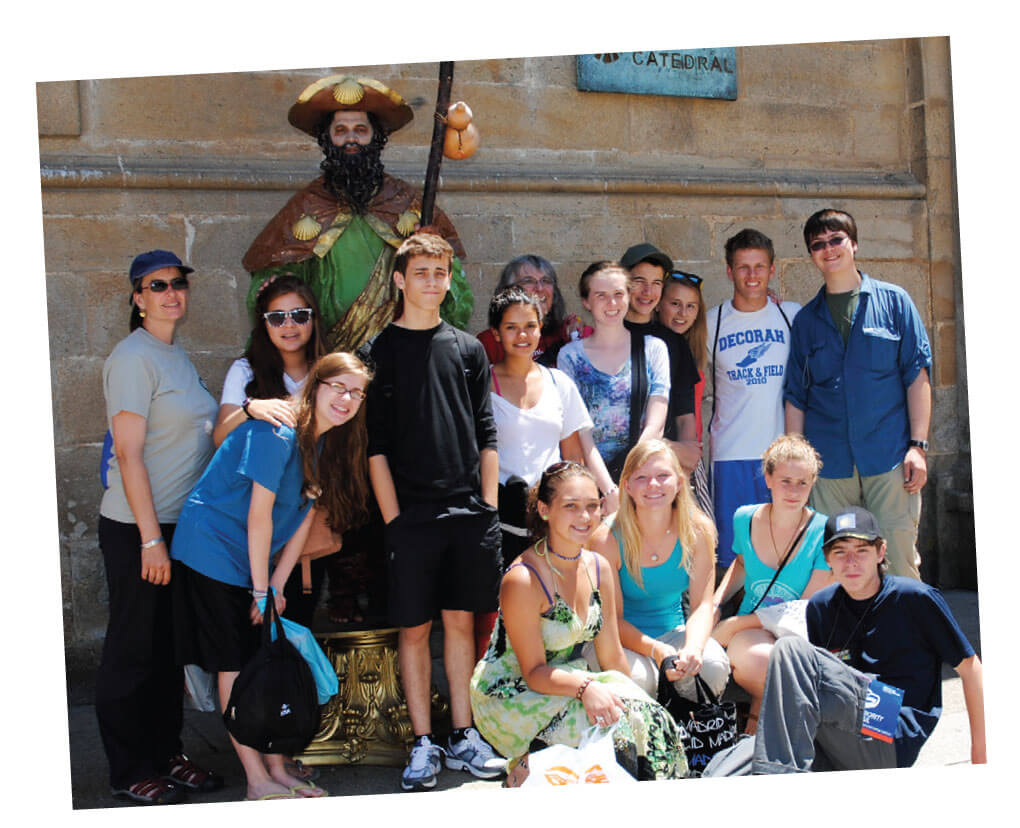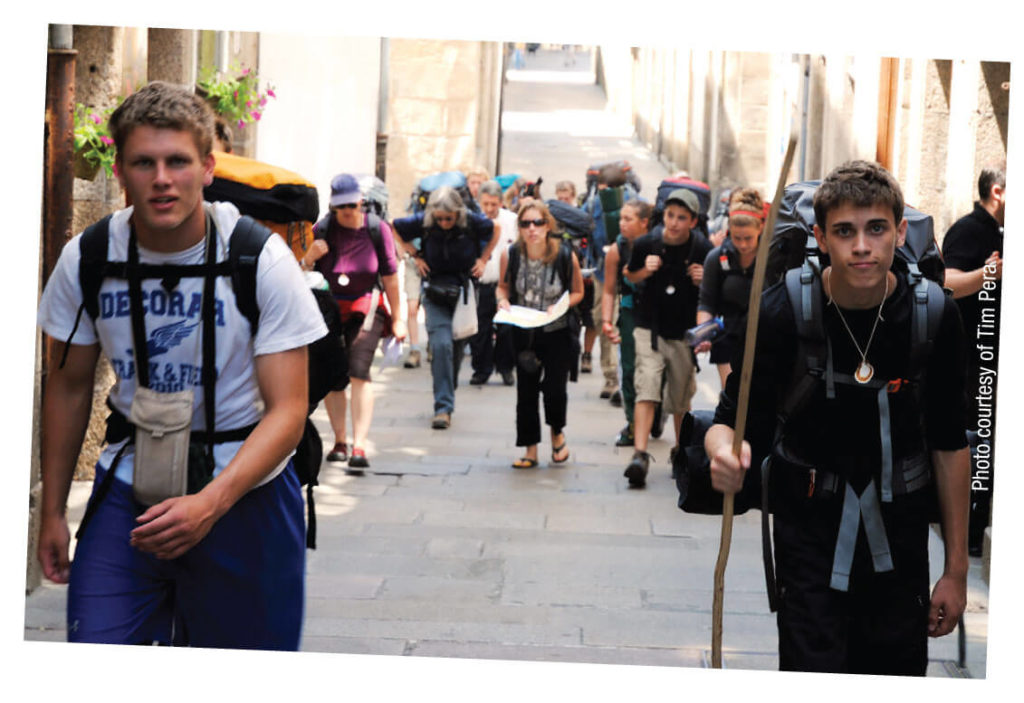by Julie Surma

Do you wonder what might happen if you took a break from all social networking, ditched your cell phone and your computer, and slowed down to take a (very) long walk with your friends?
How about taking a six-day walk along a holy route that people have been traversing for 1,000 years?
Fourteen teens and five leaders from St. Clement’s Church in St. Paul, Minnesota, did exactly that. The group walked only a small part of the ancient Camino de Santiago, which stretches nearly 500 miles from southern France to northwest Spain. They started in Sarria, Spain, and ended 68 miles later at the shrine of St. James in the Cathedral of Santiago de Compostela.
“Many churches do mission trips with their teens, which is a good thing,” says youth pilgrimage leader Susan Mallison. “But we want to give our teens time to see where they are as spiritual people. They are asking the big, big questions, and this journey gives them the space to look at where their faith is.”
“Basically, the day is walking,” Susan continues. “We get up pre-dawn to start walking, because it gets hot in the middle of the day. We arrive at the next stopping place in the afternoon, rest, take a shower, and wash our socks. We stay in simple, big rooms filled with bunk beds.”
“I liked the walking the best,” says Alexander. “I chose who I walked with but also had time to think by myself.”
“I liked being in a group,” says Allie.
“The pilgrimage was best after we were done walking,” says Ellen, “when we were all at the hostel together, being tired together, and eating together.”
“The pilgrimage provides security for a spiritual journey,” Kyra adds. “For kids our age, talking about how we feel about God is taboo. So it is nice to have a place where we can express our feelings, no matter where we are on the journey. Everyone respects each other’s perspectives.”

Every evening the pilgrims gather for a meeting to process the day. Sometimes the teens answer a question they receive the night before to think about on the day’s walk. For example, “Where do you see the face of God today?”
The group also writes postcards of gratitude in the evenings to every family in the parish, thanking them for supporting the pilgrimage and telling home folks they are praying for them specifically that night. The teens also open one letter of support a night from a parish family or a former pilgrim.
“I usually don’t get letters by mail,” says Sam. “I looked forward every day to reading another letter.”
“Some of the people who wrote letters were talking to me about things they wouldn’t normally talk about,” Jenna notes. “God is not a normal social topic. I heard things I didn’t expect to hear.”
“The letters made me part of something bigger,” says Allie. “On the trail we had only each other, but the letters reminded me of all the support we had back home.”

In preparing for the trip teens learned that pilgrims tell stories. During the evening gathering at some point in the trip, each teen tells two stories — a bible story and a personal story.
“Usually the personal story tells something that we don’t already know about each other,” says Ellen. “Reflecting on those stories is powerful.”
“The group jelled in such a deep and profound way as we listened with caring and understanding to the stories,” says Susan. “I sat with my eyes closed. I couldn’t watch. It’s like Moses and the burning bush; it was so holy.”
“I proved to myself that I could do the pilgrimage,” says Kyra. “To have only two outfits, carry everything in my pack, and walk for a long period each day was definitely a struggle. But I found it empowering to be able actually to do it. It was equally empowering to watch those around me do it!”
Carrying everything on one’s back is an important part of the pilgrimage experience. It brings up questions such as: What do I bring with me? What am I willing to carry? What can I leave behind?
“A pilgrimage is a pretty bare bones trip. At some point people come to realize that,” says Liz, an adult leader. “We only need the clothes on our backs and the ones that are drying in our backpacks. A pilgrim needs to shed things because it’s really hard to carry everything. We brought letters and prayers from our congregation that added to the physical weight, but I wouldn’t leave them out.”
“I would leave out the blisters I got!” says Allie.
Adult leader Jenna adds, “Physically the trail is hard. Sometimes it is urban and nicely paved. Other times it was like portaging in the Boundary Waters — tough. We set goals to make because we had a big group. Some days people were sick with dehydration or blisters, but none of us were afraid. The Red Cross has stations along the way. We discovered that the Camino — and the group — takes care of us.”
“Something happens as we walk where other Christians have walked for centuries to a designated holy place. The road connected us with our spiritual history,” says Susan.

On arrival at the Cathedral in Santiago, pilgrims take their credencial or Pilgrim Record, duly stamped along the way, to the nearby Pilgrim Office. The office issues a Compostela certificate (still written in Latin) that confirms the completion of the pilgrimage. Walkers and pilgrims on horseback must complete at least the last 100 km and cyclists the last 200 km to qualify for the certificate.
“What sticks with me is that the pilgrimage helped me make God small,” says Kyra. “That sounds kind of weird. But I realized on my faith journey my issues have to do with thinking of God as too big — a huge, monolithic entity that could solve all my problems. I had an internal conflict about that.
“But every night we answered the question, ‘Where did you see the face of God today?’ That was always really easy for me. I could see God when I got to the top of a hill, or in nature, or even in a friend. I realized that finding God in small things was easy. So now I’m trying to expand that circle a bit and find ways to see God as bigger. The pilgrimage helped me see small bits of God everywhere.”
